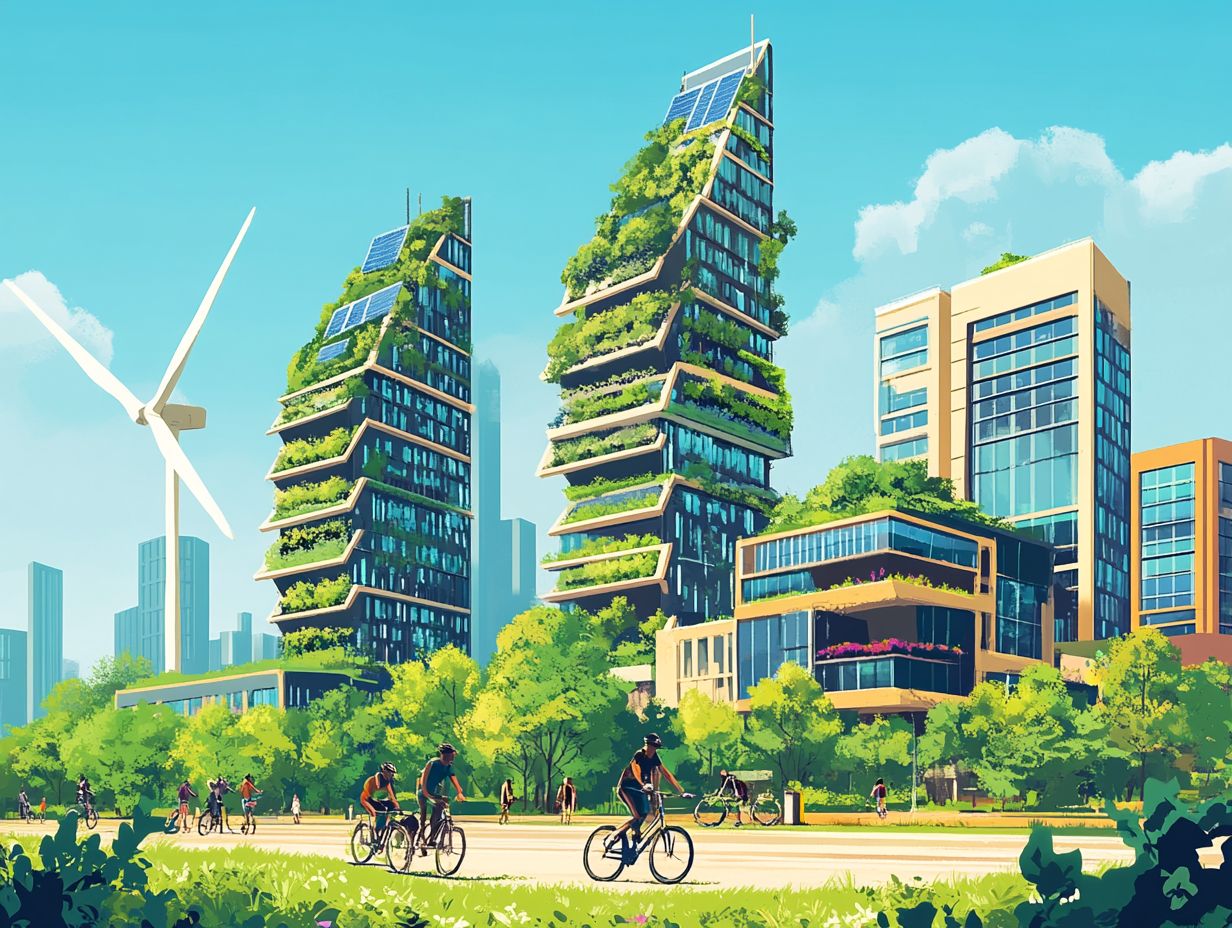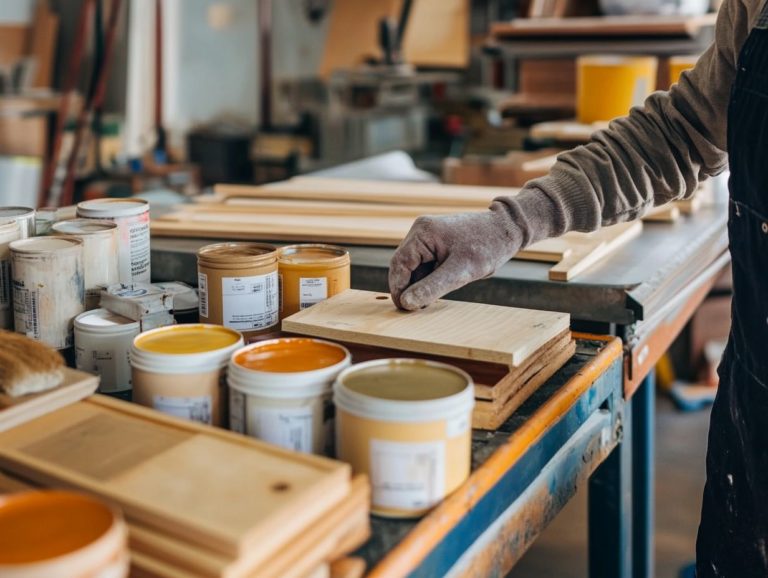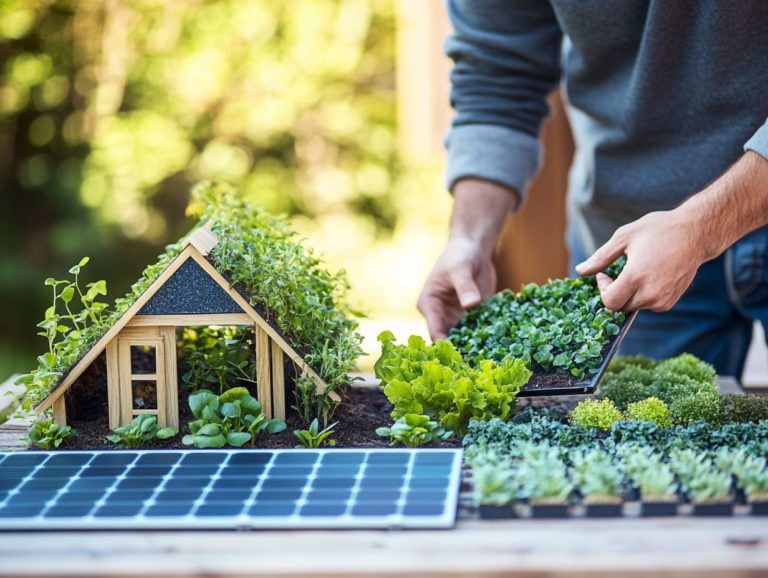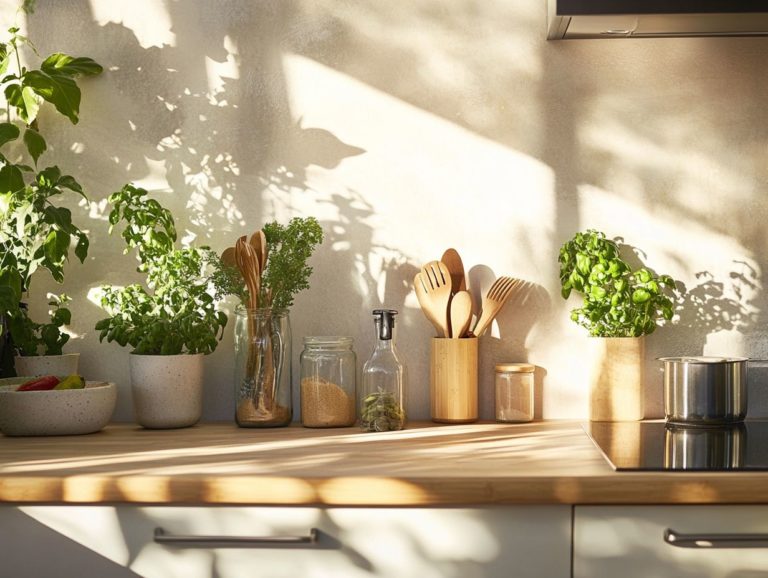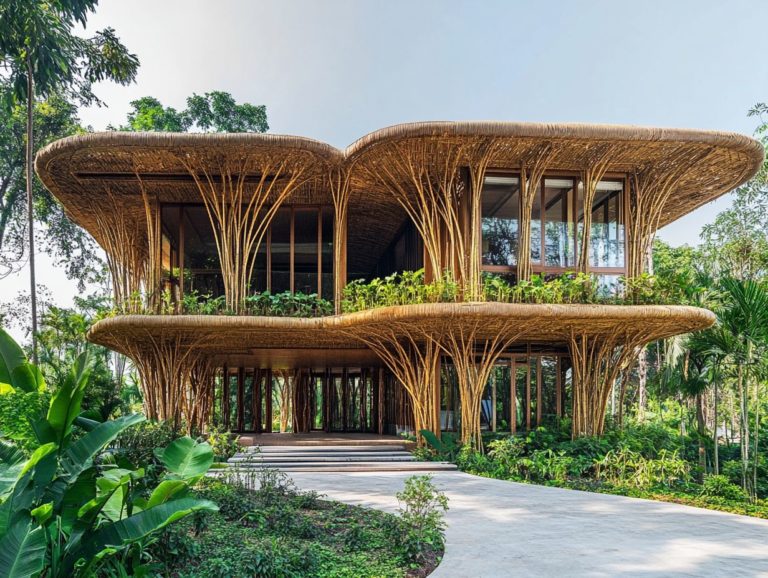The Future of Sustainable Building Technology
As the world confronts urgent environmental challenges, sustainable building technology stands out as a beacon of hope. It promises both ecological and economic advantages.
This article delves into the latest trends in innovative materials and techniques that are changing how buildings are made. It highlights the barriers that hinder broader adoption and offers practical solutions to overcome them.
This article will also explore future developments and their impact on the industry. Whether you re a builder or a homeowner, you’ll discover valuable insights to seamlessly integrate sustainable practices into your projects.
Contents
- Key Takeaways:
- The Importance of Sustainable Building Technology
- Current Trends in Sustainable Building Technology
- Barriers to Implementing Sustainable Building Technology
- Future Developments in Sustainable Building Technology
- How to Incorporate Sustainable Building Technology
- Frequently Asked Questions
- What is the future of sustainable building technology?
- How will sustainable building technology impact the construction industry?
- What are some examples of sustainable building technology?
- How will sustainable building technology benefit the environment?
- What are the challenges facing the future of sustainable building technology?
- What role do governments play in promoting sustainable building technology?
Key Takeaways:
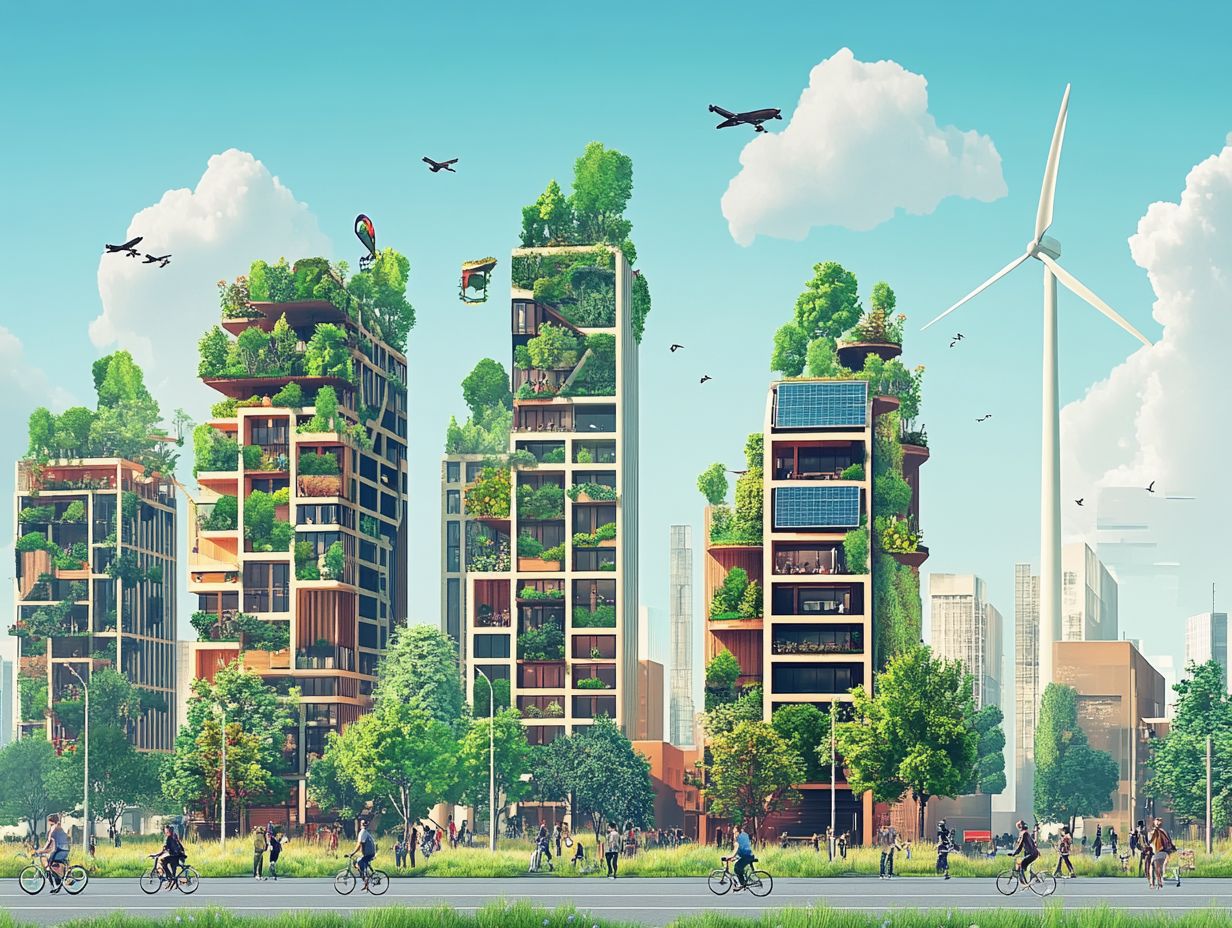
- Sustainable building technology offers both environmental and economic benefits, making it essential for the future of construction.
- Current trends include the use of innovative materials and techniques that reduce energy consumption and waste.
- While challenges exist, solutions are being developed to overcome barriers to implementing sustainable building technology.
The Importance of Sustainable Building Technology
Sustainable building technology is essential in the fight against climate change and minimizing the carbon footprint of our infrastructure.
By embracing green construction practices like utilizing energy-efficient materials and integrating renewable energy systems you can join the movement to create amazing sustainable buildings that improve indoor air quality and foster eco-friendly habits.
Furthermore, by supporting advanced technologies and government policies geared toward sustainable infrastructure, you align your efforts with global initiatives, such as the Paris Agreement, to effectively combat climate change.
Environmental and Economic Benefits
The benefits of sustainable buildings are extensive. They enable you to significantly reduce the carbon footprint of the construction industry while fostering a circular economy.
By opting for energy-efficient materials, you decrease energy consumption and enhance indoor air quality, leading to healthier living and working spaces.
Beyond these ecological advantages, act now to reap significant economic benefits! Energy-efficient designs often result in substantial cuts to your utility bills, paving the way for long-term cost savings.
Moreover, embracing sustainable practices can elevate your property values, making them increasingly appealing to environmentally-conscious buyers.
With the rising demand for green properties, investing in sustainable buildings offers you a unique opportunity for both environmental stewardship and economic prosperity.
Current Trends in Sustainable Building Technology
You ll find that current trends in sustainable building technology are evolving at an impressive pace.
Innovations like 3D printing and prefab construction are at the forefront, driving the movement toward low carbon building practices and enhanced energy efficiency.
Innovative Materials and Techniques
Innovative materials and techniques in green construction are transforming the way you design and construct buildings. Options like bamboo, recycled steel, rammed earth, and green roofs are now available.
These sustainable solutions underscore your commitment to ecological responsibility while enhancing energy efficiency and durability.
Take bamboo, for example; its rapid growth and impressive strength make it an ideal choice for resilient structures with minimal environmental impact.
Recycled steel minimizes waste and provides superior structural integrity essential for modern high-rise buildings.
On another note, rammed earth boasts excellent thermal mass, helping you maintain comfortable indoor temperatures and lower energy costs.
Green roofs foster biodiversity and improve insulation, reducing your reliance on heating and cooling.
Together, these materials are vital in creating buildings that are not just functional, but also resilient against the increasingly unpredictable effects of climate change.
Barriers to Implementing Sustainable Building Technology
Even with the remarkable strides made in sustainable building technology, several barriers stand in the way of its widespread adoption. Financial constraints, regulatory hurdles, and a general lack of awareness regarding the benefits of sustainable buildings in combating climate change are significant obstacles you must navigate.
Challenges and Solutions
The challenges in implementing sustainable buildings often center around financing regulations and the perceived costs tied to eco-friendly practices. However, viable solutions are within your reach.
By tackling budget constraints through innovative financing models like green bonds or low-interest loans, you can alleviate some of the financial pressure. Leveraging incentives from government agencies can encourage more builders to embrace sustainable technologies, transforming regulatory hurdles into supportive frameworks.
Partnering with local governments helps you navigate these regulations and opens avenues for grants and subsidies aimed at promoting green construction practices.
Together, these strategies create a more favorable environment for the growth of sustainable building projects, making them a viable and profitable reality.
Future Developments in Sustainable Building Technology
Future advancements in sustainable building technology are poised to transform the industry in remarkable ways. Expect to see innovations in renewable energy integration and the rise of net-zero buildings structures that produce as much energy as they consume over a year becoming the norm in construction.
This evolving landscape will enhance efficiency and redefine what it means to build responsibly.
Predictions and Potential Impact
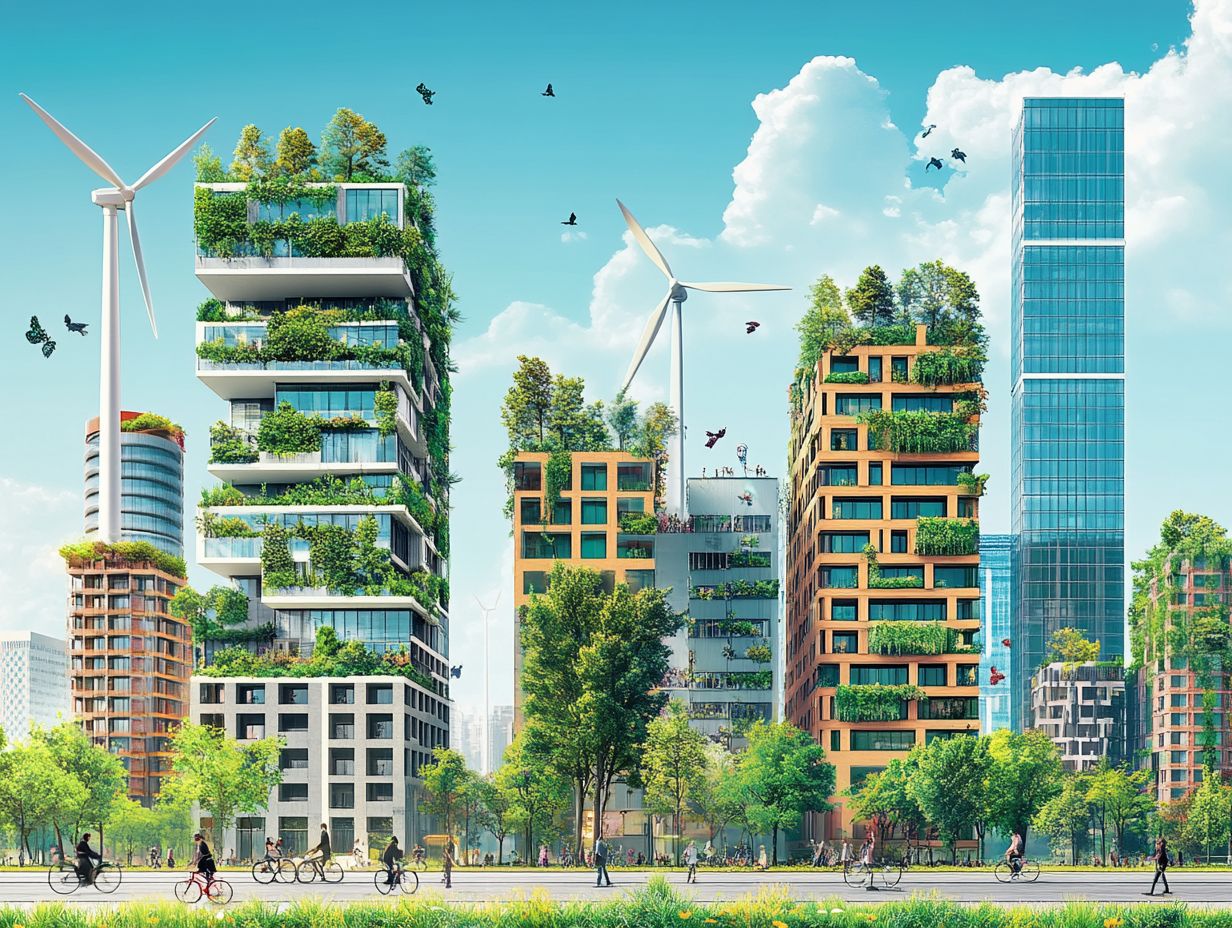
Predictions for the future of sustainable buildings indicate a profound impact on both the environment and the economy, particularly through the adoption of a circular economy and cutting-edge green technologies.
These innovations are set to transform urban planning, encouraging the creation of eco-friendly infrastructure that minimizes resource consumption while maximizing energy efficiency. As various sectors embrace these advancements, you’ll witness a shift toward more efficient resource management practices, ensuring materials are reused and waste is significantly reduced.
Integrating sustainable designs into communities greatly enhances overall well-being, fostering healthier living environments that prioritize natural light, clean air, and green spaces.
Aligning these developments with climate change mitigation strategies empowers stakeholders to cultivate resilient urban landscapes that withstand environmental challenges and thrive economically.
How to Incorporate Sustainable Building Technology
Incorporating sustainable building technology into your new or existing structures is a process rich with potential. You can embrace practical strategies, such as integrating renewable energy systems and prioritizing indoor air quality, to create spaces that are both environmentally friendly and enhance your living experience.
Practical Tips for Builders and Homeowners
For builders and homeowners eager to embrace sustainable building technology, there are several practical tips to consider. Start by choosing energy-efficient materials and adopting green construction practices that benefit both the environment and the overall quality of your projects.
- Select renewable resources like bamboo or reclaimed wood to elevate the aesthetic appeal of your spaces while significantly reducing environmental impact.
- Incorporating advanced building technologies, such as 3D printing, minimizes waste and optimizes material usage, making your construction processes more efficient.
- Implement passive design strategies like designing for natural ventilation and maximizing daylight to further lower energy consumption and enhance comfort.
- Explore smart home technologies that enable real-time energy monitoring. This guarantees you re using resources efficiently for a sustainable future!
Frequently Asked Questions
What is the future of sustainable building technology?
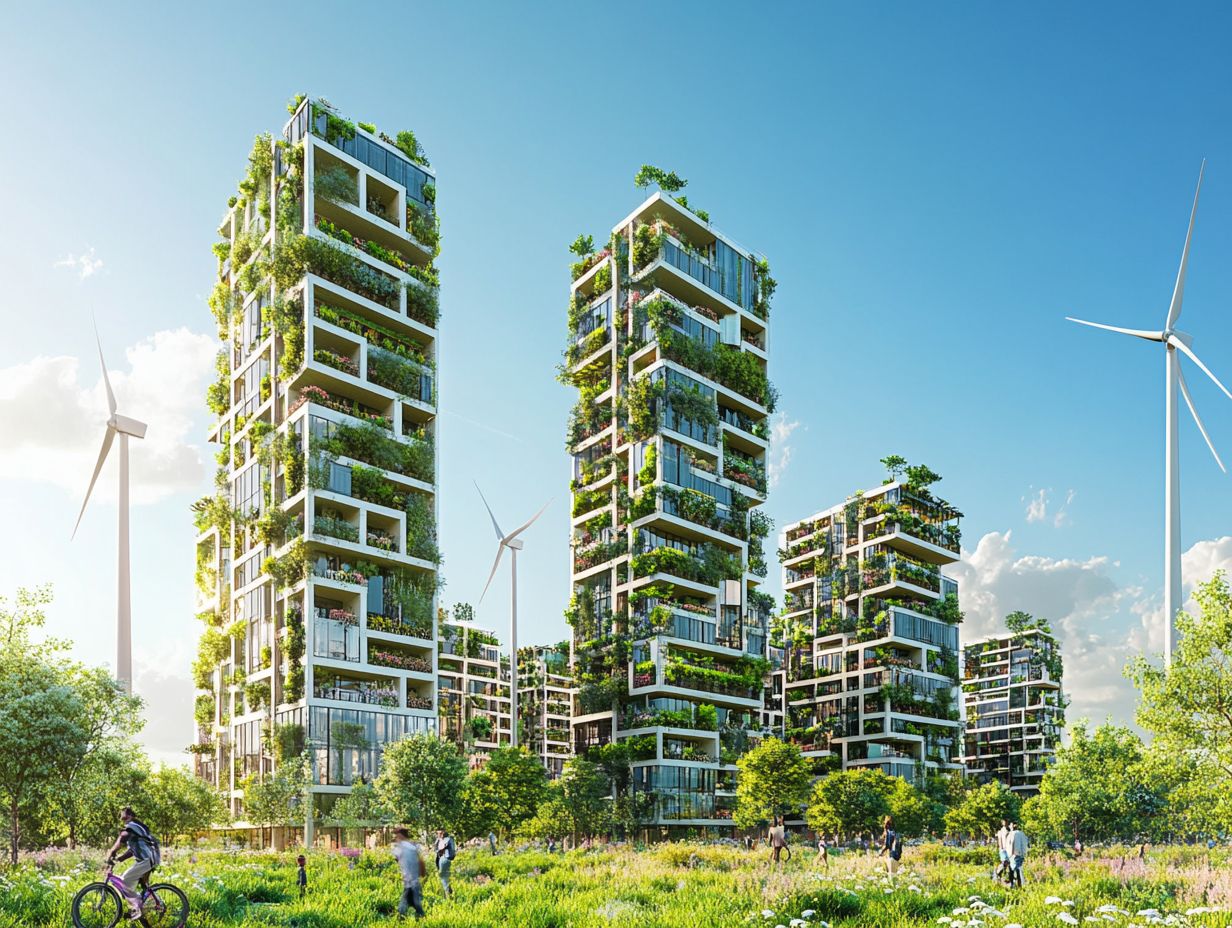
The future of sustainable building technology focuses on innovative and environmentally friendly materials. It also embraces renewable energy and smart systems that manage energy use.
How will sustainable building technology impact the construction industry?
This technology will transform construction by encouraging eco-friendly methods and cutting waste. It aims to boost efficiency and save costs.
What are some examples of sustainable building technology?
Examples include green roofs, solar panels, energy-efficient windows, and smart systems that monitor energy usage. These technologies help buildings use energy more wisely.
How will sustainable building technology benefit the environment?
This technology will lower carbon emissions and conserve natural resources. It also lessens the negative effects of construction on our ecosystems.
What are the challenges facing the future of sustainable building technology?
Challenges include high initial costs and a general lack of awareness. Many also resist change in the construction industry.
What role do governments play in promoting sustainable building technology?
Governments are vital in this movement. They can create policies that encourage eco-friendly practices and fund research for new technologies.
Now is the time to embrace sustainable building technology. The future of our environment depends on it!

